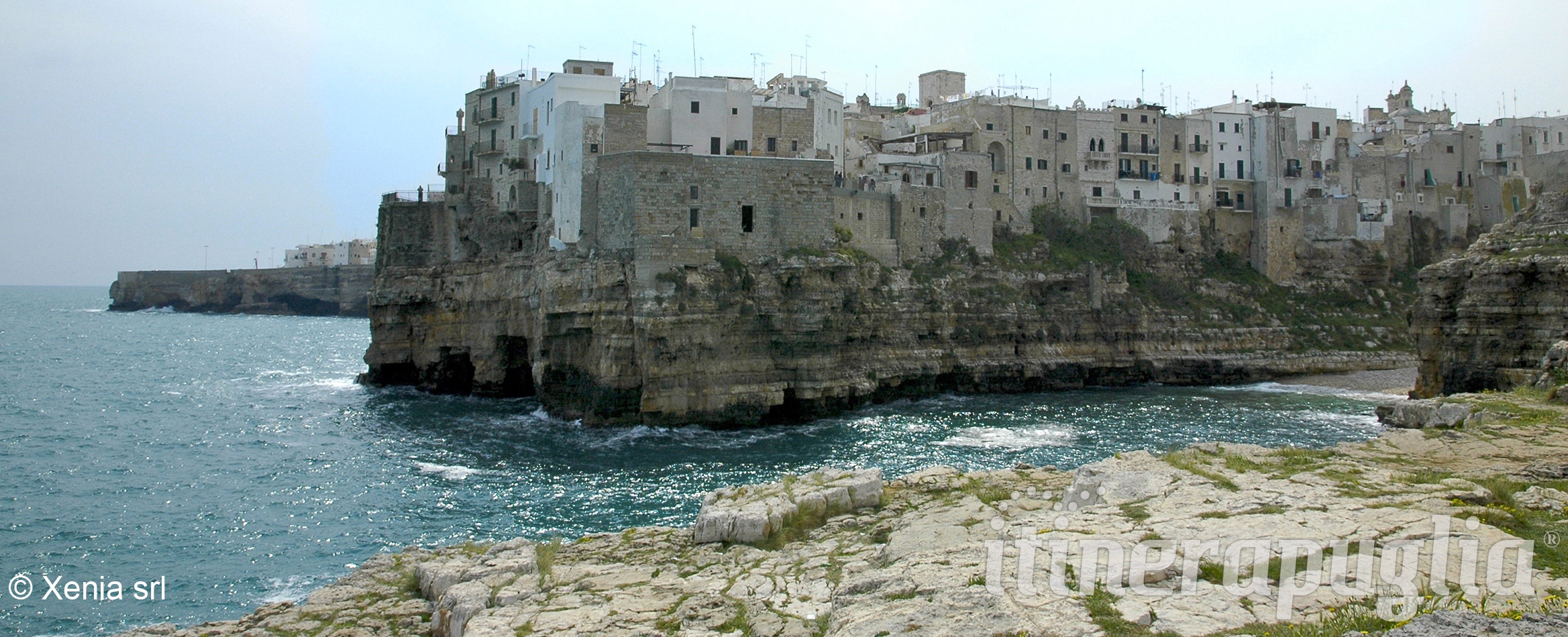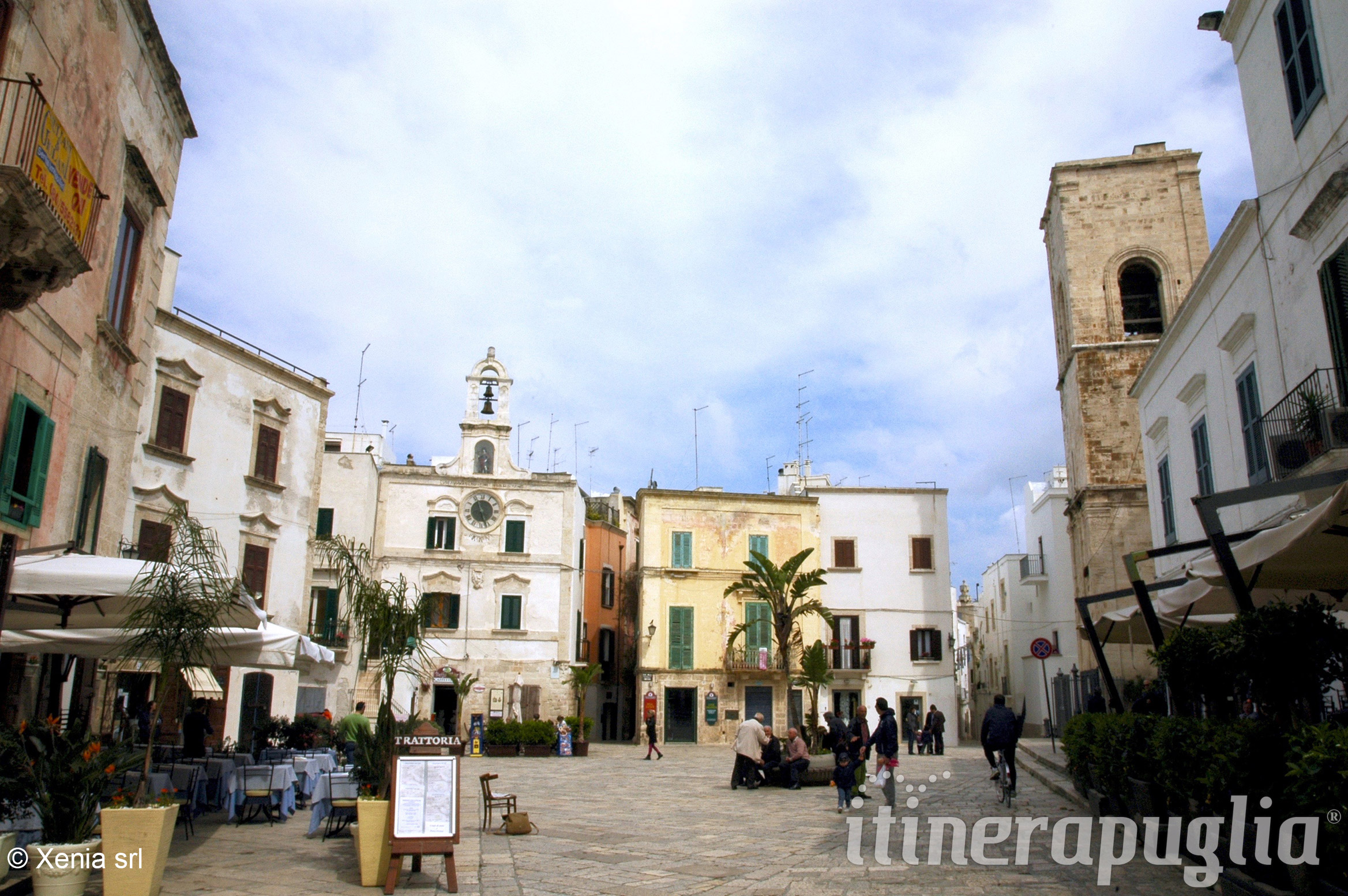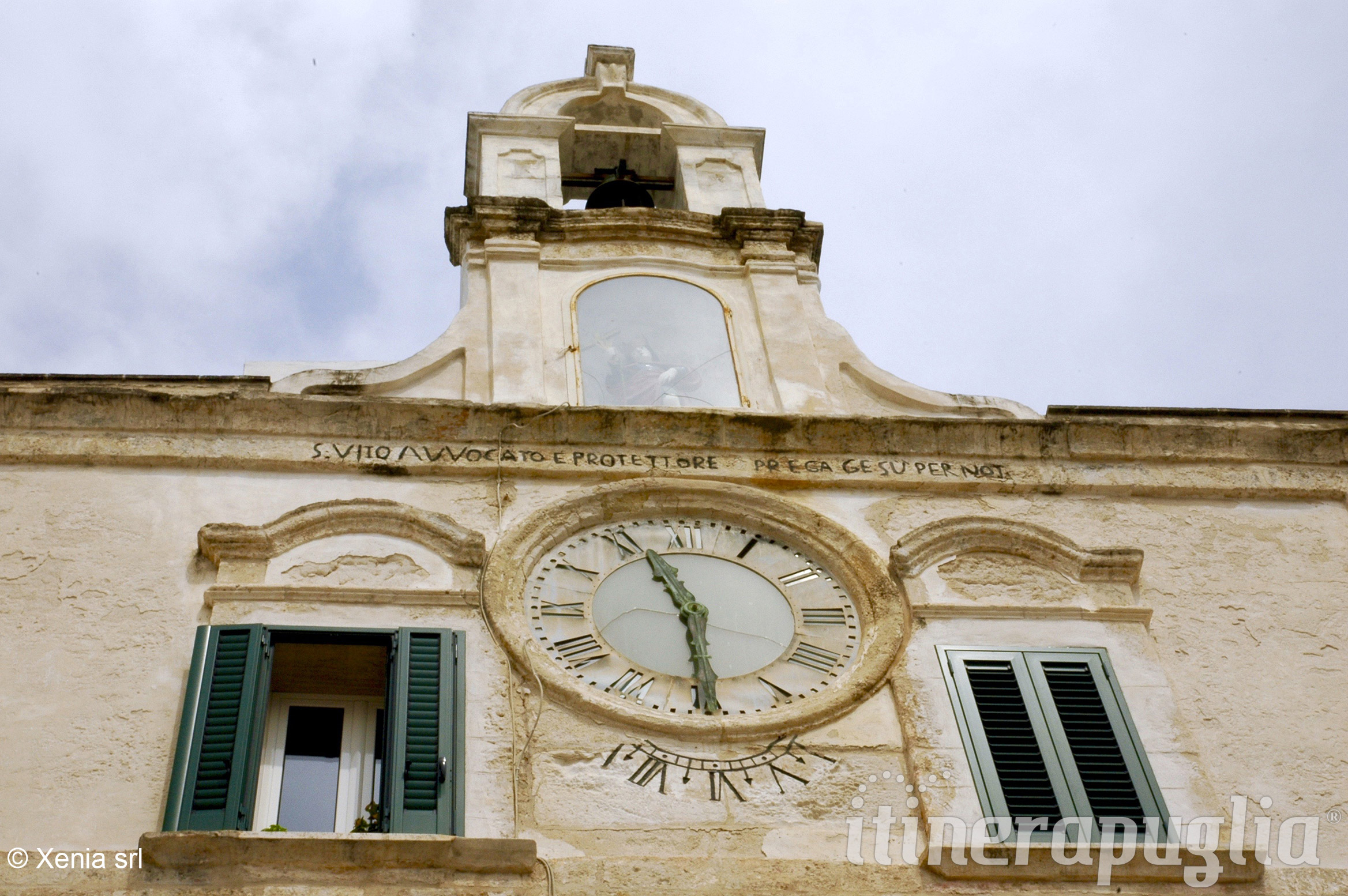A terrace on the blue
Small medieval village perched on a high and rocky coastline and overlooking a sea of innumerable shades, Polignano a Mare is a perfect synthesis between art and nature.
Hence one of the greatest artists of the Italian music, Domenico Modugno, and here is the museum dedicated to Pino Pascali, Polignano born of parents, one of the most representative Italian artists of the Pop Art.
 Narrow streets, whitewashed houses and patios bursting with colors and scents, the terraces are overlooking the sea; everything seems to be a call to contemplation, an homage that is offered to the imagination of poets. It is for this reason that the FAI (Italian Environment Fund) has entered Polignano between sites not to be forgotten.
Narrow streets, whitewashed houses and patios bursting with colors and scents, the terraces are overlooking the sea; everything seems to be a call to contemplation, an homage that is offered to the imagination of poets. It is for this reason that the FAI (Italian Environment Fund) has entered Polignano between sites not to be forgotten.
Walking through its narrow streets means stumble at every turn in breathtaking views, surprised by the sudden view of the sea that interrupts the succession of houses with a Mediterranean flavor.
The Arch of the Old Port, today said Arco Marchesale, was until the eighteenth century the only access to the village.
It was provided with drawbridge, the door still has holes, which activated the chains of the drawbridge and the grooves of the iron grate; on the arch is a painting representing the Crucifixion, built in the Middle Ages.
From here you enter the Fulvia Milani Perotti square, dedicated to the noblewoman and writer, descendant of the lords of Polignano.
 From this moment you can decide to get lost in the narrow streets of the historic center, between small houses and whitewashed courtyards lime and charming terraces overlooking the rocks.
From this moment you can decide to get lost in the narrow streets of the historic center, between small houses and whitewashed courtyards lime and charming terraces overlooking the rocks.
Many are the places of worship that are worth visiting, such as the Church of Santo Stefano, built in the Middle Ages on the homonymous bastion where, for centuries, gathered in prayer and in marriage the lower classes of the city.
The Mother Church, former cathedral, consecrated in 1295 in Santa Maria Assunta, was instead the place of worship “reserved” to the nobles and the upper classes. Inside it is preserved the precious artistic crib by Stefano da Putignano, built in the late Middle Ages, and two important sculptures by the same author: the Pietà and the Madonna and Child. Valuable also the polyptych by Bartolomeo Vivarini of the fifteenth century, preserved in the sacristy.
Continuing the walk in the old town, you can visit the Church of Purgatory, baroque building built in the first half of the eighteenth century, which houses numerous paintings and a Neapolitan invoice organ. Other place of worship of interest is the Church of St. Anthony, built in the late sixteenth century, once a refuge for plague victims in times of epidemics; It preserves a choir of 1768 and prestigious paintings of the seventeenth century.
Continuing towards Piazza Vittorio Emanuele II, we encounter the Clock Palace, of medieval origin, once the seat of the University. The ground floor rooms housed oil deposits and other provisions, while the rear part was used as a prison. The renovations of the Baroque period, recognizable in the sculptural ornaments on the windows, they conceal the medieval origin.

Interesting is the clock installed in the second half of the eighteenth century, still loaded by hand to mark the moments work or feast of the city.
In collaboration with the editors of Itinerapuglia.com




